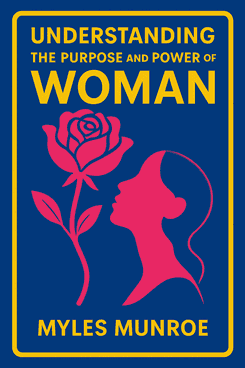
Understanding The Purpose And Power Of Woman by Myles Munroe Summary
Overview of Understanding The Purpose And Power Of Woman
Discover why "Understanding The Purpose And Power Of Woman" earned a stellar 4.37 Goodreads rating. Dr. Munroe's revolutionary perspective has transformed marriages, sparked gender role debates, and become recommended reading in schools. What hidden female strength might you unlock?
Similar books to Understanding The Purpose And Power Of Woman
Feel the book through the author's voice
Turn knowledge into engaging, example-rich insights
Capture key ideas in a flash for fast learning
Enjoy the book in a fun and engaging way
Key takeaways
When Half the World Forgot Who They Were
What happens when an entire gender loses touch with its original design? For thousands of years, women have been told they're less than, made for service, created as afterthoughts. But what if the real crisis isn't about women needing to fight for equality-what if it's about humanity forgetting the blueprint entirely? We've been trying to fix a problem we don't even understand, demanding rights we already possessed, fighting battles that were won before they began. The issue isn't that women need permission to be valuable. It's that we've all forgotten what value actually means.
The Problem Isn't Cultural-It's Cosmic
The Blueprint We Abandoned
When Design Meets Destiny
The Language Barrier Nobody Talks About
The Leadership Nobody Sees
Living the Design
Quick Summary Mode - Read or listen to Understanding The Purpose And Power Of Woman Summary in 8 Minutes
Break down key ideas from Understanding The Purpose And Power Of Woman into bite-sized takeaways to understand how innovative teams create, collaborate, and grow.
Flash Card Mode - Top 8 Insights from Understanding The Purpose And Power Of Woman in a Nutshell
Distill Understanding The Purpose And Power Of Woman into rapid-fire memory cues that highlight Pixar’s principles of candor, teamwork, and creative resilience.

Fun Mode - Understanding The Purpose And Power Of Woman Lessons Told Through 23-Min Stories
Experience Understanding The Purpose And Power Of Woman through vivid storytelling that turns Pixar’s innovation lessons into moments you’ll remember and apply.
Personalize Mode - Read or listen to Understanding The Purpose And Power Of Woman Summary in 0 Minutes
Ask anything, pick the voice, and co-create insights that truly resonate with you.

From Columbia University alumni built in San Francisco
"Instead of endless scrolling, I just hit play on BeFreed. It saves me so much time."
"I never knew where to start with nonfiction—BeFreed’s book lists turned into podcasts gave me a clear path."
"Perfect balance between learning and entertainment. Finished ‘Thinking, Fast and Slow’ on my commute this week."
"Crazy how much I learned while walking the dog. BeFreed = small habits → big gains."
"Reading used to feel like a chore. Now it’s just part of my lifestyle."
"Feels effortless compared to reading. I’ve finished 6 books this month already."
"BeFreed turned my guilty doomscrolling into something that feels productive and inspiring."
"BeFreed turned my commute into learning time. 20-min podcasts are perfect for finishing books I never had time for."
"BeFreed replaced my podcast queue. Imagine Spotify for books — that’s it. 🙌"
"It is great for me to learn something from the book without reading it."
"The themed book list podcasts help me connect ideas across authors—like a guided audio journey."
"Makes me feel smarter every time before going to work"
From Columbia University alumni built in San Francisco

Get the Understanding The Purpose And Power Of Woman summary as a free PDF or EPUB. Print it or read offline anytime.











